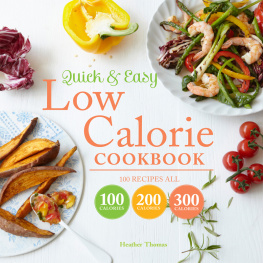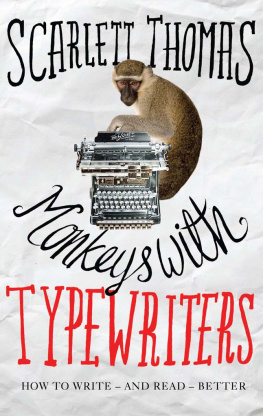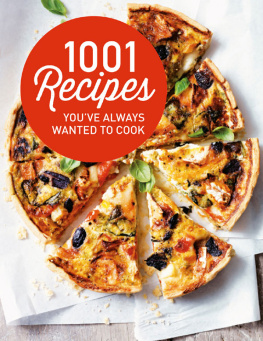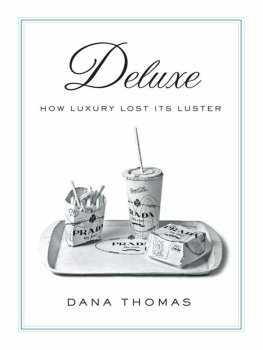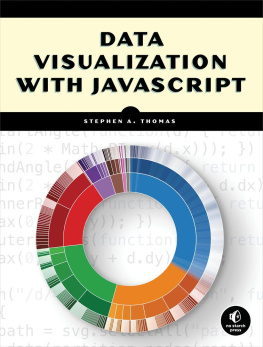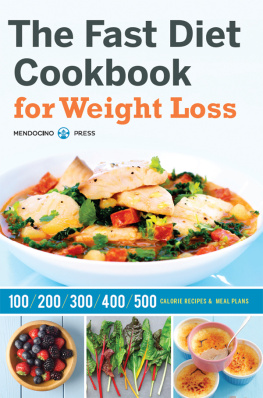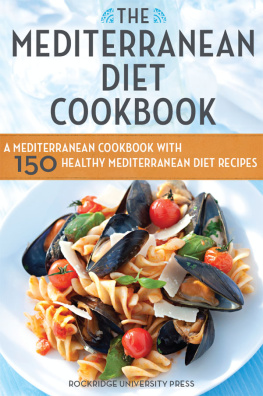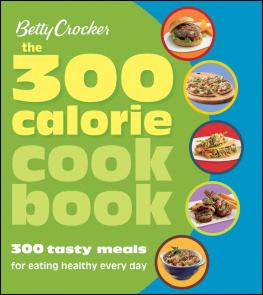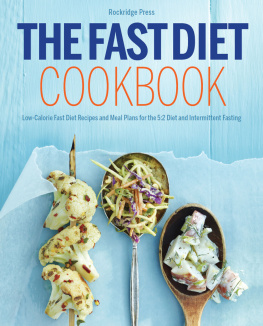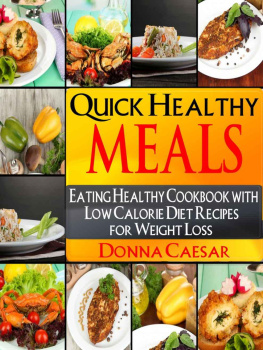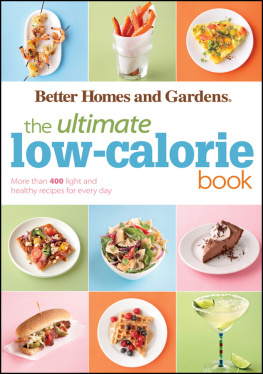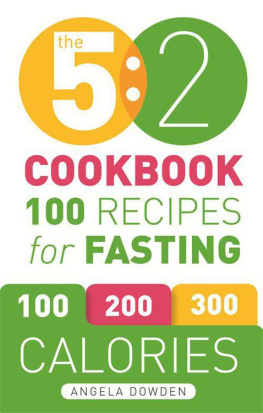


Contents
introduction
The key to losing weight effectively is a regime thats easy to follow, enjoyable, never leaves you feeling hungry and allows you to make your own choices about what to eat. This book takes the guesswork and arithmetic out of calorie counting. Whether you are on a weight-loss programme for just want to maintain your ideal weight, these quick and easy recipes enable you to watch your calorie intake while eating tasty meals that will leave you feeling fuller for longer. You can navigate your way through the day without worrying about calories and quantities theres no number crunching.
No guesswork no counting No matter what diet you are following or what your daily calorie target is, its easy to achieve and to stay on course with this book. Throw away your calculator and stop worrying about food just relax and enjoy every meal.
Theres no need to guess, because all the recipes fall into 100-, 200- and 300-calorie portions, making weight loss, control and maintenance so easy. It works with so many diets No matter how much or how little weight you have to lose or which diet you are following, this approach works. Whether you are just limiting your daily calorie intake to a specific number per day, dieting online, going to classes or following the 5:2 regime, this book can help and inspire you, making slimming so much simpler. There is no magic formula to dieting successful weight loss and maintenance are all about calories: how many you consume and how many you burn, and to lose weight you need to take in fewer calories than you use up. Nearly all diets are based on calorie counting, whether they call them by their name or use other systems. What are calories? Whether you want to lose weight or maintain your ideal weight, it comes down to a simple formula: the calories you consume (from the food you eat) must not exceed the calories you burn in the course of a day doing chores, working, exercising and going through your daily routine. What are calories? Whether you want to lose weight or maintain your ideal weight, it comes down to a simple formula: the calories you consume (from the food you eat) must not exceed the calories you burn in the course of a day doing chores, working, exercising and going through your daily routine.
If we eat more calories than we use, they are stored in our bodies as fat. There are approximately 3,500 calories (or kilocalories/kcals) in 450g/1lb of fat. Therefore to lose a pound, you need to eat 3,500 fewer calories or use them up by exercising or a combination of both. A calorie is a unit of heat energy that fuels our bodies; high-fat and high-sugar foods contain more calories than those that are low in fat and sugar: you get about 9 calories from 1g fat and about 4 calories from 1g protein. Be calorie aware By learning about the calorie content of the foods you eat, you can make informed and conscious choices and be more in control of your weight. Always check the labels on foods such as breakfast cereals, ready meals, sauces and salsas, fruit juice and smoothies although many of them are perceived as healthy, they can contain hidden or empty calories in the form of fat and sugar.
And lots of the snack foods that we grab without thinking are loaded with calories. For example, a large caffe latte made with whole milk might contain as many as 225 calories, while a blueberry muffin could add up to 550 calories. Together, thats approximately half the calories people would aim to eat in a day on a 1500 calorie-controlled weight-loss diet! Portion control made easy In this book you can mix and match your meals to achieve your calorie target each day without agonizing about piling on the pounds everything is counted for you and portion-controlled to help you manage your weight more effectively. Just choose delicious recipes from the following calorie bands: 100-calorie breakfasts, brunches, light meals and desserts200-calorie breakfasts, brunches, packed lunches, light meals and desserts300-calorie breakfasts, lunches and main meals By taking control of what you eat, you will be more calorie aware as well as feeling healthier and trimmer. You can proceed at your own pace and enjoy a wide range of nutritious foods, including many of your favourites. Stay slim When you reach your weight-loss goal, you can use the recipes to maintain your ideal weight in the long term. Stay slim When you reach your weight-loss goal, you can use the recipes to maintain your ideal weight in the long term.
As they are simple to make and taste so good, you will be happy to use them again and again. By adopting a healthier diet and working with simple calorie bands, you will be less likely to regain the weight you have lost. If you have a minor lapse or indulgence, dont worry or feel guilty just reduce your calorie intake for a day or two and you will be back on track.
Slimming success
If you want to be successful at losing weight and staying trim in the long term, you need to learn new healthy eating habits and make them an intrinsic part of your lifestyle. By eating a varied low-fat, low-sugar diet that supplies all the essential nutrients your body needs for good health, you can enjoy your food and never feel hungry. Here are some guidelines to get you going:
Dont obsess about your weight If you get stressed about your weight and how slowly the pounds are dropping off, it will be self-defeating.
Successful weight loss is a gradual process and takes time; if you lose weight too fast, you are more likely to put it on again and there may be risks to your health. Dont keep weighing yourself once a week is enough. Your weight fluctuates from day to day, so you wont get a true picture of how much you have lost. Plan ahead Try not to think too much about food and what you are going to cook for dinner tonight or lunch tomorrow. By planning ahead and doing one big shop instead of making several visits to the supermarket, you can get on with your life and focus on other things. By selecting meals from the 100-, 200- and 300-calorie recipes in this book, its easy to plan a whole weeks menus in advance.
By ordering your weekly food online and having it delivered to your home, you are less likely to succumb to the many tempting high-calorie foods you spot as you stroll along the supermarket aisles. Feel fuller for longer By eating high-fibre and low-GI (glycaemic index) foods, such as vegetables, fruit, beans, pulses and oatmeal that are relatively low in calories and release energy slowly, you will feel fuller for longer, help keep your blood glucose and insulin levels stable, and reduce hunger pangs between meals. GI ratings are given for every recipe throughout this book. Check food labels carefully When you are shopping, check the nutritional information on food labels carefully to make sure that even supposedly healthy foods (e.g. smoothies and yogurts) are not high in sugar and fat. Recognize your trigger foods We all have favourite foods and snacks that we love so much that we find it hard to eat them in moderation.
They might be sweets (candy), chocolate bars, wine or biscuits (cookies). By acknowledging your weaknesses, you are taking control of what you eat. You can still continue to enjoy them as an occasional treat and within the context of your daily and weekly calorie target.
Next page
